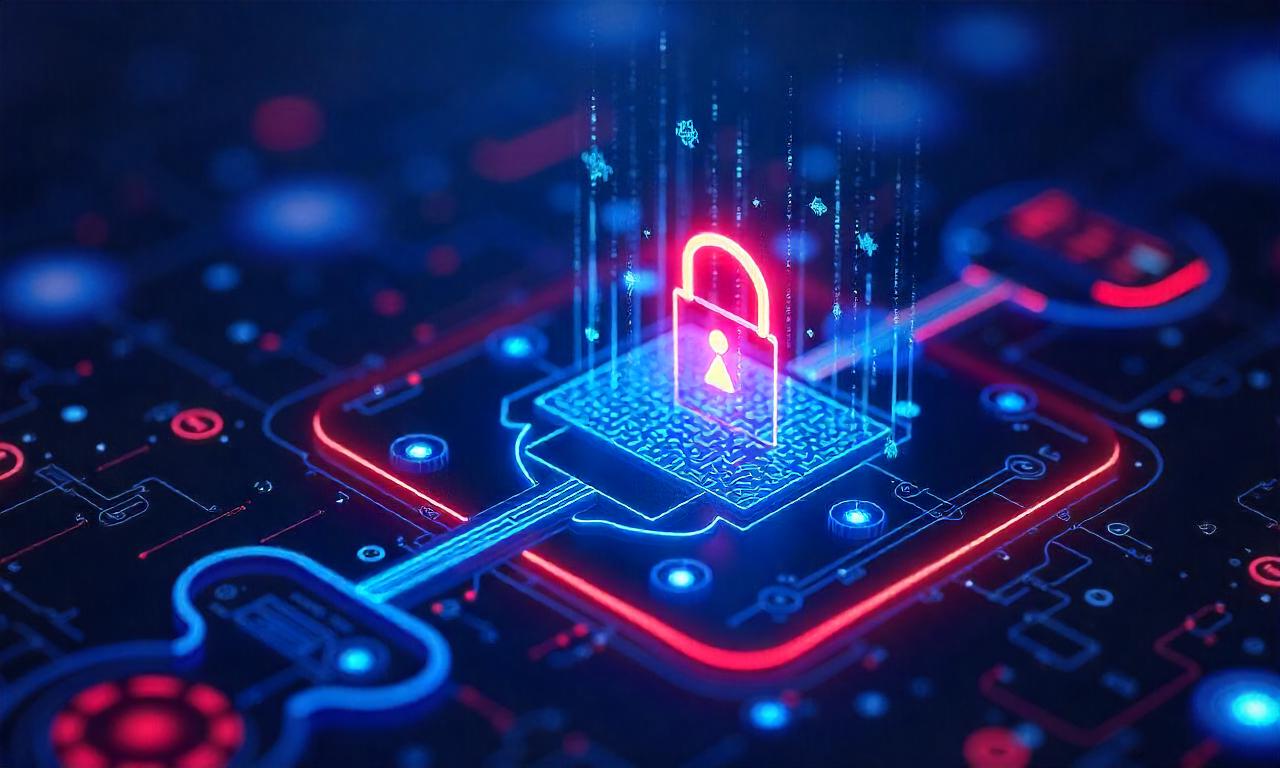In an increasingly digital world, examples of recent major cyber attacks have exposed vulnerabilities in critical sectors like healthcare, energy, and finance. These incidents highlight how sophisticated cyber threats can disrupt operations, steal sensitive data, and even cause physical damage. From the SolarWinds breach in 2020 to the Colonial Pipeline ransomware attack in 2021, the frequency and severity of cyber attacks have grown exponentially. Understanding these cases is essential for businesses and individuals to strengthen their cybersecurity defenses and stay ahead of potential threats. This article explores five examples of recent major cyber attacks, analyzes their methods, impacts, and responses, and provides actionable insights for prevention.
Table of Contents
Toggle—
### 1. SolarWinds Cyber Attack (2020)
The SolarWinds cyber attack remains one of the most significant examples of recent major cyber attacks due to its sophisticated multi-stage approach and widespread implications. This supply chain attack, discovered in December 2020, targeted over 18,000 organizations, including government agencies and Fortune 500 companies. Attackers inserted malicious code into the SolarWinds Orion software update, which was then distributed to users through trusted channels. The breach allowed hackers to access sensitive data, such as emails and network traffic, and even launch further attacks on affected systems.
One of the key factors that made this attack so dangerous was its stealthy execution. The malware, named Sunburst, operated undetected for months, exploiting vulnerabilities in the software update process. This method enabled attackers to infiltrate systems without triggering immediate alerts, making it difficult to trace the origin of the breach. The attack was attributed to a Russian hacking group, believed to be linked to the Fancy Bear or Cozy Bear. The scale of the breach, combined with its state-sponsored nature, raised concerns about the security of supply chains and the potential for cyber warfare.
The SolarWinds cyber attack also demonstrated the importance of third-party risk management. Many organizations rely on software providers for updates and maintenance, making them susceptible to attacks that exploit these dependencies. The aftermath saw a global push for stricter cybersecurity protocols, including the reinforcement of software authentication and real-time monitoring systems. This attack serves as a case study in supply chain vulnerabilities, emphasizing the need for continuous vigilance and proactive security measures.
#### 1.1. How the Attack Was Carried Out The SolarWinds attack utilized a supply chain exploitation technique, where hackers compromised a software vendor’s update server. By injecting malicious code into the Orion software, they ensured the malware was deployed to millions of users globally. The code was disguised as a legitimate update, making it challenging to detect. This method allowed the attackers to maintain long-term access to systems without triggering alarms.
The malware was designed to operate stealthily, using advanced techniques like living off the land (LotL). Instead of relying on external tools, it used built-in system utilities to blend in with normal operations. This reduced the chances of detection and made the attack more difficult to trace. The Sunburst malware also included a backdoor, enabling remote access to systems and facilitating data exfiltration.
#### 1.2. The Impact on Organizations The SolarWinds cyber attack affected a wide range of sectors, including the U.S. Department of Defense, NASA, and the Department of Homeland Security. The breach compromised sensitive data, such as classified government documents and corporate trade secrets, leading to concerns about national security. The financial and reputational damage was estimated to be in the hundreds of millions of dollars, with organizations scrambling to mitigate the risks.
The attack’s long-term implications were profound. It exposed the weaknesses in software supply chains and led to increased scrutiny of vendors. Companies began implementing zero-trust architectures and multi-factor authentication to prevent similar breaches. The SolarWinds incident also prompted international collaborations in cybersecurity, as nations worked to identify and neutralize the threat.
—
### 2. Colonial Pipeline Ransomware Attack (2021)
The Colonial Pipeline ransomware attack in May 2021 was a major example of a cyber attack that caused widespread disruption in the United States. This attack targeted one of the country’s largest fuel pipelines, leading to a temporary shutdown of operations and a $4.4 million ransom payment. It underscored the vulnerability of critical infrastructure to cyber threats and the potential for ransomware to impact physical systems.
The attack began with a phishing email that contained a malicious attachment. When an employee clicked on the link, it initiated a wiper ransomware called DarkSide, which encrypted the company’s systems and disrupted its operations. The ransomware was particularly effective because it not only blocked access to data but also erased critical information, forcing the company to pay a ransom to restore functionality.
The Colonial Pipeline cyber attack had immediate consequences. The shutdown of the pipeline led to fuel shortages and panic in the southeastern U.S., affecting gasoline prices and supply chains. The ransom payment highlighted the economic pressure faced by organizations during a cyber incident. This attack also prompted the U.S. government to take a more active role in cybersecurity, with increased funding for infrastructure protection.
#### 2.1. The Role of Ransomware in This Attack Ransomware played a central role in the Colonial Pipeline incident. The DarkSide ransomware used a double extortion tactic, encrypting data and threatening to leak it if the ransom wasn’t paid. This method maximized pressure on victims, forcing them to choose between paying the ransom or losing sensitive data. The ransomware’s ability to spread quickly across the network further compounded the damage.
The impact of ransomware on the Colonial Pipeline was severe. The encryption of systems caused operational delays, and the threat of data leakage added to the urgency of the response. The company had to restart its IT systems from backups, which took several days to restore. This event also revealed the risk of ransomware attacks on non-IT systems, as the malware disrupted physical operations by targeting control systems.
#### 2.2. Response and Aftermath Colonial Pipeline’s response included paying the ransom and collaborating with cybersecurity experts to identify the breach’s origin. The ransom payment was made in Bitcoin, showcasing the financial incentives for cybercriminals. The attack also led to a ransomware-as-a-service model gaining traction, as groups like DarkSide operated efficiently and scalable.
The aftermath of the attack saw enhanced cybersecurity measures in the energy sector. Companies began investing in robust backup systems and cybersecurity insurance to mitigate risks. The Colonial Pipeline incident also prompted regulatory changes, such as the Cybersecurity and Infrastructure Security Agency (CISA)’s increased focus on critical infrastructure protection.
—
### 3. Kaseya Ransomware Attack (2021)
The Kaseya ransomware attack in July 2021 was another major example of a cyber attack that exploited a supply chain vulnerability. This attack targeted Kaseya, a cloud-based IT management software provider, and affected over 1,000 businesses worldwide, including Microsoft, Atera, and others. The quick spread of the ransomware across interconnected systems highlighted the risks of third-party dependencies.
The attack was carried out using the REvil ransomware group, which exploited a vulnerability in Kaseya’s VSA software. By compromising the update servers, hackers were able to deploy the malware to multiple customers simultaneously. The ransomware encrypted data and demanded payments, with the initial ransom of $69 million and a second payment of $6.9 million for a backup key. This double extortion strategy underscored the financial and operational pressure on victims.
The impact of the Kaseya attack was significant, as it disrupted operations for companies that rely on managed service providers (MSPs). Businesses faced data loss, downtime, and financial losses. The attack also demonstrated the vulnerability of small and medium enterprises (SMEs), which may lack the resources to implement advanced cybersecurity measures.
#### 3.1. Exploiting the Supply Chain The Kaseya ransomware attack exemplified how supply chain attacks can be devastating. By targeting the software update process, attackers could infect multiple organizations at once. This leveraging of interconnected systems made the attack more efficient and scalable. The vulnerability exploited was a zero-day flaw, which allowed hackers to launch the ransomware without prior knowledge of the weakness.
The REvil ransomware group used customized malware to exploit the supply chain, ensuring a rapid and widespread impact. Once the malware was deployed, it encrypted data across the network, making it impossible for businesses to access critical systems. The attack’s scale showed how a single point of failure in a software provider could ripple across entire industries.
#### 3.2. The Financial and Operational Toll The Kaseya ransomware attack caused substantial financial losses for affected businesses. The initial ransom demand of $69 million was met with a $6.9 million payment to retrieve the backup key. In addition to the ransom, companies incurred costs for system recovery, lost revenue, and reputational damage.
The operational disruption was even more severe. Many businesses had to shut down operations temporarily to address the ransomware infection. The attack also exposed the importance of cloud security, as Kaseya’s cloud-based model became a target for cybercriminals. The Kaseya incident served as a wake-up call for organizations to audit their third-party relationships and implement stronger security protocols.
—
### 4. JBS Food Cyber Attack (2021)
In June 2021, the JBS Food cyber attack became a major example of a cyber attack that disrupted global food supply chains. The attack, carried out by the REvil ransomware group, targeted JBS, the world’s largest meat processing company, and led to the shutdown of operations in several countries. This incident highlighted the vulnerability of food industry infrastructure to cyber threats.
The JBS ransomware attack occurred through a phishing campaign that led to the infection of the company’s network. Attackers encrypted data and demanded a ransom of $11 million to restore operations. The attack’s impact was immediate, causing production halts and supply chain delays. This globalized cyber threat affected Australia, Brazil, and the U.S., with disruptions lasting for days.
The JBS cyber attack also demonstrated the economic consequences of ransomware. The ransom payment was accepted by the company, showcasing the pressure to resolve the issue quickly. The attack’s aftermath saw increased awareness of cybersecurity in the food industry, prompting investments in backup systems and threat detection tools.
#### 4.1. The Scale and Scope of the Attack The JBS ransomware attack affected over 300 companies in four countries, with operations in Australia, Brazil, and the U.S. temporarily halted. The attack’s impact extended to food supply chains, affecting meat production and distribution. This localized disruption had global repercussions, as JBS supplies meat to major retailers and restaurants.
The REvil ransomware group used targeted phishing emails to gain initial access to JBS’s network. Once inside, the malware spread rapidly, encrypting critical systems and databases. The attack’s speed and efficiency were key factors in its success, as companies had little time to react. The ransomware’s dual threat of data encryption and data leakage increased the pressure on victims to pay the ransom.
#### 4.2. The Response and Business Continuity JBS’s response included paying the ransom to restore operations and prevent further damage. The company’s decision to pay was controversial, as it highlighted the dilemma of ransomware victims. However, the payment allowed JBS to recover quickly, with operations resuming within a week.
The JBS incident also led to improvements in business continuity planning. Companies began implementing more resilient backup systems and real-time monitoring solutions. The attack’s success demonstrated the importance of securing supply chain partners, as a single breach could cascade through multiple organizations.
—
### 5. Recent Ransomware Attacks on Healthcare Systems (2023)
In 2023, the healthcare sector became a major target for ransomware attacks, with several high-profile incidents disrupting patient care and data access. The attacks on healthcare systems like UK’s National Health Service (NHS) and U.S. hospitals underscored the vulnerability of critical services to cyber threats. These incidents often targeted hospital networks, causing delays in treatment and data breaches.
The UK’s NHS ransomware attack in November 2023 was a major example of a cyber attack that paralyzed hospitals and clinics across the country. Attackers, believed to be Russian-speaking hackers, encrypted patient records and systems, forcing operations to be moved to paper-based methods. The ransom demand of $1 million was paid by the NHS, but the disruption caused significant public concern.
The healthcare sector is particularly vulnerable due to its reliance on legacy systems and interconnected networks. These attacks often exploit outdated software and weak security protocols, allowing hackers to gain access to sensitive medical data. The 2023 healthcare ransomware incidents also showed increased targeting of remote systems, as telemedicine and digital health platforms became more prevalent.

#### 5.1. How Healthcare Systems Were Hacked Hackers used phishing emails and remote access tools to penetrate healthcare networks. Once inside, they deployed ransomware to encrypt critical data, such as patient medical records and diagnostic tools. The attack’s efficiency was due to exploiting unpatched software vulnerabilities, which provided easy entry points for the malware.
The ransomware variants used in these healthcare cyber attacks included Conti and LockBit, which are known for their specialized ransomware-as-a-service (RaaS) models. These groups targeted hospitals and clinics with specific data needs, such as patient information and research databases. The ability to hold healthcare systems hostage made these attacks particularly dangerous, as they directly impacted public health.
#### 5.2. The Human and Economic Consequences The human cost of these healthcare ransomware attacks was significant, with patients facing delayed treatments and medical staff relying on manual processes. The economic impact included ransom payments, lost productivity, and recovery costs. In the case of the UK NHS, the attack caused widespread panic and affected over 100 hospitals, highlighting the interconnectedness of modern healthcare systems.
The increased frequency of these attacks forced healthcare organizations to prioritize cybersecurity investments. Many hospitals now implement regular software updates, multi-factor authentication, and incident response plans. The 2023 healthcare ransomware incidents also spurred international collaboration, as nations worked to share threat intelligence and prevent future attacks.
—
### 6. The Role of Supply Chain Attacks in Modern Cybersecurity Threats
Supply chain attacks have become a dominant strategy for cybercriminals in recent years. These attacks target the weakest links in the supply chain, allowing hackers to infect multiple organizations simultaneously. The SolarWinds and Kaseya attacks are prime examples of how third-party software can be exploited.
Supply chain attacks capitalize on trust, as vendors are often assumed to have strong security measures. When a vendor’s system is compromised, it can ripple through its customers, causing widespread damage. The SolarWinds attack showed how a single software update could compromise thousands of systems. Similarly, the Kaseya attack infected over 1,000 businesses through interconnected cloud services.
The advantages of supply chain attacks include speed, scalability, and ease of execution. Hackers need only one vulnerability to infect the entire network, making these attacks cost-effective and efficient. The increasing use of cloud services and software-as-a-service (SaaS) models has exacerbated the risk, as more organizations rely on third-party infrastructure.
#### 6.1. The Emergence of Ransomware as a Key Threat Ransomware has evolved into a major cyber threat, with groups like DarkSide and REvil leading the charge. These ransomware-as-a-service (RaaS) models allow attackers to operate efficiently by leveraging pre-built tools. The Colonial Pipeline and JBS attacks demonstrated how ransomware can target critical infrastructure and force immediate financial concessions.
The effectiveness of ransomware lies in its ability to encrypt data and demand payments. Attackers often use double extortion tactics, where they threaten to leak data if the ransom isn’t paid. This increases the pressure on victims to resolve the issue quickly. The 2023 healthcare ransomware attacks further highlight the economic and operational costs of these breaches.
#### 6.2. Mitigating the Risks of Supply Chain Attacks To prevent supply chain attacks, organizations must implement robust security protocols for third-party vendors. This includes regularly auditing software updates, using secure authentication methods, and monitoring network activity. The SolarWinds attack emphasized the importance of verifying software integrity through digital signatures and checksums.
Another key strategy is diversifying software sources to reduce reliance on a single vendor. The Kaseya attack showed how interconnected systems can be exploited, so companies should have multiple backup solutions in place. Employee training is also critical, as phishing emails often serve as the initial entry point for these attacks.
—
### 7. Lessons Learned and Prevention Strategies
The examples of recent major cyber attacks provide valuable lessons for businesses and individuals. One of the most critical takeaways is the need for continuous software updates. The SolarWinds and Kaseya attacks exploited unpatched vulnerabilities, highlighting how outdated systems can be exploited easily.
Regular updates are essential to close security gaps and prevent exploitation. Organizations should implement automated patching systems and monitor update logs for anomalies. The Colonial Pipeline attack also demonstrated the importance of backups, as companies that had robust backups were able to recover faster.
Another key lesson is the adoption of multi-factor authentication (MFA). Phishing attacks often target login credentials, but MFA adds an extra layer of security. The JBS and Colonial Pipeline attacks show how a single compromised account can lead to widespread damage, emphasizing the need for MFA in critical systems.
#### 7.1. The Importance of Software Updates Software updates are a fundamental aspect of cybersecurity. They fix vulnerabilities that attackers can exploit. The SolarWinds attack was possible due to unpatched systems, which allowed malware to spread undetected.
Organizations must prioritize timely updates and test them before deployment. This ensures no single update introduces new risks. The Kaseya attack also showed how delays in applying patches can lead to massive breaches.
#### 7.2. Multi-Factor Authentication as a Defense Mechanism Multi-Factor Authentication (MFA) is a simple yet effective measure to prevent unauthorized access. By requiring users to provide two or more verification factors, MFA significantly reduces the risk of credential theft.
The Colonial Pipeline and JBS attacks were facilitated by phishing emails that led to credential compromise. Implementing MFA for all user accounts can minimize this risk. Additionally, MFA can be integrated with biometric authentication for enhanced security.
—
### FAQ Section
Q: What was the SolarWinds cyber attack? A: The SolarWinds attack in 2020 was a supply chain breach where hackers inserted malicious code into a software update, compromising over 18,000 organizations. It highlighted the risks of third-party vulnerabilities.
Q: How did the Colonial Pipeline attack happen? A: The attack began with a phishing email that led to wiper ransomware encrypting the company’s systems. This disrupted fuel supply and forced a $4.4 million ransom payment.
Q: What caused the JBS cyber attack? A: The JBS attack in 2021 was carried out by the REvil ransomware group, exploiting unpatched software to encrypt critical systems.
Q: Why are supply chain attacks so effective? A: Supply chain attacks target trusted vendors, allowing hackers to infect multiple systems with minimal effort. They exploit the interconnected nature of modern IT systems.
Q: What can organizations do to prevent ransomware attacks? A: Organizations should implement regular backups, use multi-factor authentication, and train employees to recognize phishing attempts.
—
### Summary
The examples of recent major cyber attacks discussed in this article illustrate the evolving tactics of cybercriminals and their impact on global industries. From the SolarWinds supply chain breach to the Colonial Pipeline ransomware incident, each attack showcased unique vulnerabilities in digital infrastructure. The Kaseya and JBS attacks further emphasized the role of third-party software in cyber threats. In 2023, healthcare systems became prime targets, with ransomware attacks disrupting patient care and data access.
These cases underscore the importance of proactive cybersecurity measures, such as regular software updates, multi-factor authentication, and employee training. Organizations must remain vigilant against supply chain vulnerabilities and ransomware as a service (RaaS) models. The human and economic consequences of these attacks highlight the need for resilient backup systems and real-time threat monitoring.
By analyzing these incidents, businesses and individuals can better prepare for future cyber threats. Investing in robust security protocols and staying informed about the latest attack vectors is critical for safeguarding digital assets. As cyber attacks become more sophisticated, preventive strategies must evolve to counter these emerging threats.
—
Table: Summary of Major Cyber Attacks (2020–2023)
| Attack Name | Year | Type of Attack | Victim(s) | Impact | Response | |————————-|———-|—————————-|———————————————|————————————————|————————————————–| | SolarWinds | 2020 | Supply Chain Attack | U.S. Government Agencies, Fortune 500 Companies | Data breaches and national security concerns | Paid ransom, implemented zero-trust systems | | Colonial Pipeline | 2021 | Ransomware | Colonial Pipeline, U.S. Energy Sector | Fuel shortages, $4.4 million ransom payment | Restarted operations, increased infrastructure security | | Kaseya | 2021 | Supply Chain Attack | Kaseya, over 1,000 businesses | Operational disruptions, $11 million ransom | Paid ransom, improved third-party security | | JBS Food | 2021 | Ransomware | JBS, UK and U.S. healthcare systems | Supply chain delays, $1 million ransom | Paid ransom, prioritized backup systems | | NHS (UK) | 2023 | Ransomware | UK National Health Service | Temporary hospital shutdowns, data breaches | Paid ransom, enhanced cybersecurity investments |
—
Conclusion
The examples of recent major cyber attacks demonstrate how cyber threats can cripple critical industries and affect global operations. Each incident provides insights into the methods and motivations of cybercriminals, emphasizing the need for continuous security improvements. From supply chain vulnerabilities to ransomware as a service, the evolution of cyber attacks requires proactive defense strategies. By learning from these cases, organizations can strengthen their cybersecurity posture and minimize the risk of future breaches.
In an increasingly connected world, cybersecurity is no longer optional. The lessons from these attacks highlight the importance of software updates, multi-factor authentication, and employee awareness. As attacks become more sophisticated, preparation and resilience are key to mitigating their impact. By analyzing these incidents, businesses can adapt their defenses and protect against the growing threat of cyber attacks.
Ringkasan (Summary): The examples of recent major cyber attacks in 2020–2023 reveal critical vulnerabilities in supply chains, ransomware, and healthcare systems. The SolarWinds attack demonstrated the risks of unpatched software, while the Colonial Pipeline and JBS incidents highlighted the economic and operational toll of ransomware. The 2023 NHS attacks showed how healthcare systems can be paralyzed by cyber threats. These cases underscore the need for proactive security measures, including regular updates, multi-factor authentication, and robust backup systems. Organizations must remain vigilant and adapt to evolving attack strategies to safeguard their digital assets.














